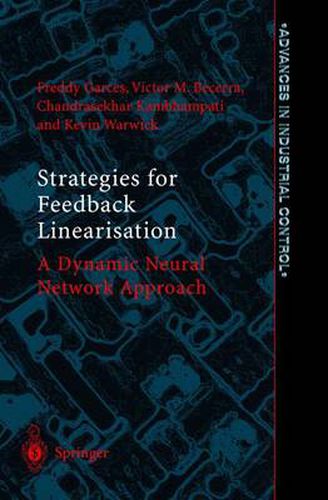Readings Newsletter
Become a Readings Member to make your shopping experience even easier.
Sign in or sign up for free!
You’re not far away from qualifying for FREE standard shipping within Australia
You’ve qualified for FREE standard shipping within Australia
The cart is loading…






This title is printed to order. This book may have been self-published. If so, we cannot guarantee the quality of the content. In the main most books will have gone through the editing process however some may not. We therefore suggest that you be aware of this before ordering this book. If in doubt check either the author or publisher’s details as we are unable to accept any returns unless they are faulty. Please contact us if you have any questions.
The last few decades have witnessed tremendous developments in nonlinear control theory. One of the most important of these is the model-based method of feedback linearisation in which a nonlinear system is transformed into a linear system by means of state feedback and nonlinear transformations. After feedback linearisation, a system can be dealt with by linear controller design. The extension of these techniques to include MIMO systems allows for the further simplification of controller design by decoupling the system. Strategies for Feedback Linearisation demonstrates this powerful technique in the light of research on neural networks which allow the identification of nonlinear models without the complicated and costly development of models based on physical laws. Dynamic or recurrent neural networks have inherent properties that allow them to approximate nonlinear dynamic systems. Strategies for the identification of nonlinear systems using such neural networks are presented in this monograph together with the use of such models for the design and application of input-output linearisation and decoupling methods. Strategies for Feedback Linearisation is written to serve academic and industrial researchers in non-linear control and system identification and practising control engineers interested in their application to real-world industrial systems. The reader will gain a balanced view of theoretical and practical issues: relevant mathematical proofs are provided as are case studies illustrating design and application issues.
$9.00 standard shipping within Australia
FREE standard shipping within Australia for orders over $100.00
Express & International shipping calculated at checkout
This title is printed to order. This book may have been self-published. If so, we cannot guarantee the quality of the content. In the main most books will have gone through the editing process however some may not. We therefore suggest that you be aware of this before ordering this book. If in doubt check either the author or publisher’s details as we are unable to accept any returns unless they are faulty. Please contact us if you have any questions.
The last few decades have witnessed tremendous developments in nonlinear control theory. One of the most important of these is the model-based method of feedback linearisation in which a nonlinear system is transformed into a linear system by means of state feedback and nonlinear transformations. After feedback linearisation, a system can be dealt with by linear controller design. The extension of these techniques to include MIMO systems allows for the further simplification of controller design by decoupling the system. Strategies for Feedback Linearisation demonstrates this powerful technique in the light of research on neural networks which allow the identification of nonlinear models without the complicated and costly development of models based on physical laws. Dynamic or recurrent neural networks have inherent properties that allow them to approximate nonlinear dynamic systems. Strategies for the identification of nonlinear systems using such neural networks are presented in this monograph together with the use of such models for the design and application of input-output linearisation and decoupling methods. Strategies for Feedback Linearisation is written to serve academic and industrial researchers in non-linear control and system identification and practising control engineers interested in their application to real-world industrial systems. The reader will gain a balanced view of theoretical and practical issues: relevant mathematical proofs are provided as are case studies illustrating design and application issues.